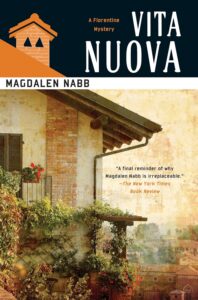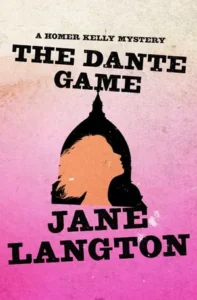“Marshal Guarnaccia’s sense of malaise sets in as Florence closes for the summer holiday. But outside the quiet city, a wealthy young woman is shot to death in her parents’ villa. A single mother pursuing her doctorate seems an unlikely target for slaughter, but perhaps the marshal can parse the truth from her unusual family.
“The fourteenth and final Florentine mystery featuring Marshal Guarnaccia” —Magdalen Nabb, Vita Nuova (A Florentine Mystery), Amazon, January 1, 2008 (retrieved December 15, 2023)
“A final reminder of why [Nabb] is irreplaceable among English speaking novelists who write mysteries with Italian locales. Like the 13 previous novels in this series set in Florence and featuring Marshal Guarnaccia, Vita Nuova reflects the sensibility of someone who sees much, speaks softly and takes pity on strangers.” —Marilyn Stasio, “Italian Blood,” The New York Times, June 8, 2008 (retrieved December 15, 2023)





